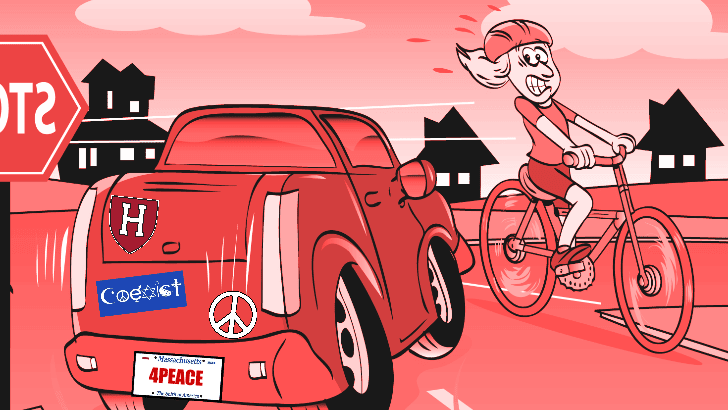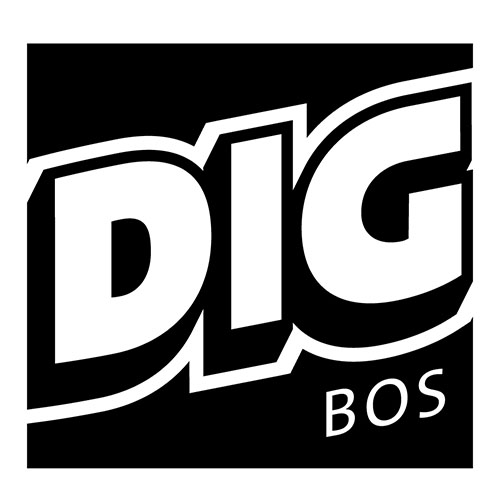
The tragic death earlier this month of Bernard Lavins, who allegedly was dragged under an 18-wheeler in Porter Square, marks the second cycling fatality in Cambridge in just over three months. Details of the accident are still emerging. Back in June, Amanda Phillips was doored and struck and killed by a lawn service truck in Inman Square. In between, Cambridge was ranked the eighth best city in the nation for cycling by Bicycling magazine. But the reality is that it’s not all safe and great—and that’s not just the case in Cambridge, but for cycling in the entire Metro Boston region.
Last October, Anita Kurmann was crushed and killed by an 18-wheeler at the corner of Mass Ave and Beacon Street in Boston. In the five years preceding that, 13 cyclists were killed on Boston streets. In the wake of Kurmann’s accident, the city quickly installed a protected bike lane along the perilous portion of Mass Ave. Similarly, after the Phillips dooring, the confusing intersection in Inman got a bright turf-green paint-over sharply delineating bike lanes and passing zones. Now, sadly, Porter Square will likely receive a similar redress.
But why does it take such a tragic event to enact safety where known perils lie? I can’t imagine Boston traffic personnel were blind to the dangers that loomed at Beacon and Mass Ave—every cyclist knew about them—while in Cambridge, following the Lavins tragedy, the city’s director of traffic, Joseph Barr, told the Boston Globe, “We know Inman Square and Porter Square as problem locations, and we are working on them.”
The sad truism is these hot zones are extremely well known, and while folks are trying to make changes, the reactionary band-aids slapped on in the wake of deaths aren’t going to make the roads safer. It’s piecemeal—put some paint on Porter Square and tweak the light signals, and somebody gets tagged in Union Square. Vision Zero, the Boston-embraced goal of zero traffic fatalities by 2030, is an admirable place to aim, but it’s not going to happen without commitment of extensive resources, and outside-the-box thinking about how we shape and navigate our urban landscapes.
Putting bike lanes in the door zone is not the answer. Separate and protected bike infrastructure is a nifty idea, but given that we have highways where there once were cow paths, there just isn’t enough paved real estate to do much else—unless we do something different. Not radical, just different, like claim a traffic lane and make it a bi-directional bike lane. Decrease the number of vehicles in the city by getting people out of their cars. It’s good for their health and the environment, and to enact such measures there would need to be incentives and alternative means of travel.
It’s also important to note that rules which apply to cars don’t completely make sense for bicycles (i.e. adherence to minimum and maximum speed limits) and should be reviewed for applicability and overall public safety. Consider the “Idaho stop,” which allows cyclists to proceed through intersections once they pause and ensure the way is clear. Another possibility involves installing signals that allow bikes a five-second jump on cars, so cyclists are visible and not in blind spots. While we’re at it, let’s get the 18-wheelers out of the city and reduce the speed limit to 20 mph (it’s currently 30 mph, though Boston and Cambridge are targeting 25 mph in the near future). No doubt about it, on-street fatalities will drop.
Even more to the point, action needs to take place across agency boundaries and town lines. Every cyclist has stories of an Eden-esque bike lane in Town A that ends in the back of a parked car in Town B. State officials and advocacy groups also need to step it up and prioritize commuting lines and networks that really connect and aren’t merely road repaving projects that are loosely linked.
Yes, we are talking about a cultural shift, and cyclists need to be ambassadors, claiming their right to the road by behaving lawfully and civilly. We’ve launched a Hubway bike share system, but still have yet to provide adequate safe passage from station to station. If you build it, they will come; the more bikes on the road, the safer we all are. That day won’t be realized, however, until families pedal the two-wheeled family truckster to the store without fear of a rampaging bus blowing them off the road.
Tom Meek is a cycling advocate, engineer, and writer living in Cambridge. He served nine years on the Cambridge Bike Committee, and through the recent swirl of social media is helping organize Monday’s Rally for Safe Streets in Cambridge.
